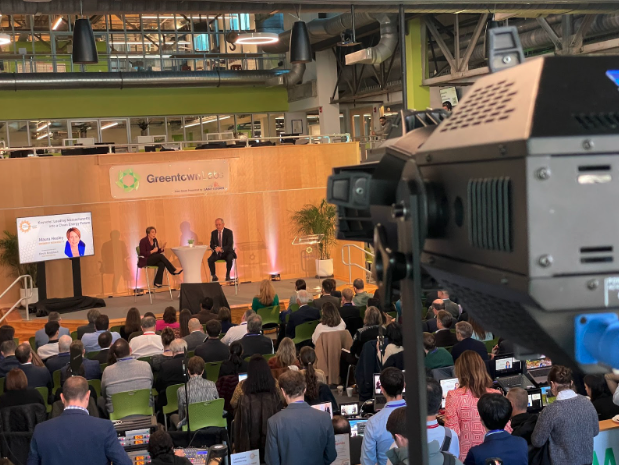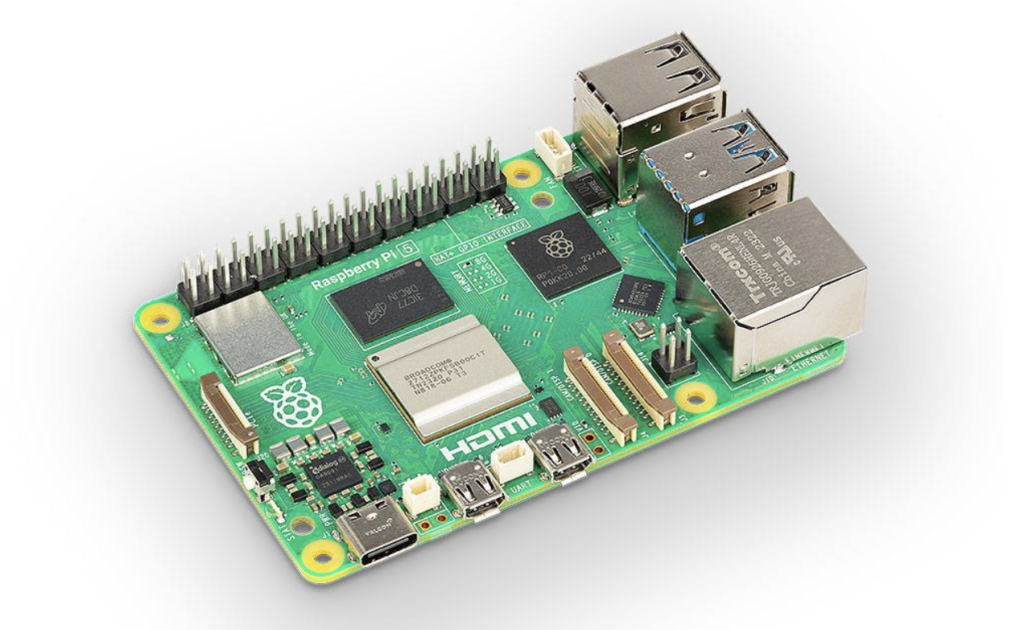
Open source software (OSS) has been growing in popularity over the years, and for good reason. Not only is it free to use, modify, and distribute, but it also fosters a collaborative and inclusive environment that allows for innovation and development to occur at a faster pace.
Open Source Software
When I picked up Make magazine for the first time, it felt like a game changer. I was working for a NASCAR team at the time and my apartment was a short walk to a shopping center with a Barnes and Noble and a wine store that also had craft beer. Friday night was for walking to Barnes and Noble to post up in the magazine section for an hour before picking up a 4-pack of Tetleys to take home for the evening. The first editions of Make, which was first published in 2005 as a quarterly, stood out. They were large format and had a matte texture on the cover that was very pleasing. More importantly, unlike my other favorite rags of the era, like Details, which were about lifestyle and had as many ads for luxury items as articles, Make was filled with articles about things you could do and build. Being someone who was always tinkering and building, it felt like someone had downloaded the thoughts in my brain and splattered them into a periodical. What I did not fully understand at the time was that Make was and still is a loud speaker for the Open Source movement. It encouraged the use of hardware and software tools like Arduinos, where the designs were fully published and that were purposefully built for people to use and modify for their own purposes. More than 15 years on from the first time I smelled the sweet ink from Make magazine, the Open Source movement has exploded and continues to have a profound impact on the way we build new products. In the first of this 2-part series I will discuss the rise of open source before discussing how to use open source tools in new product development.
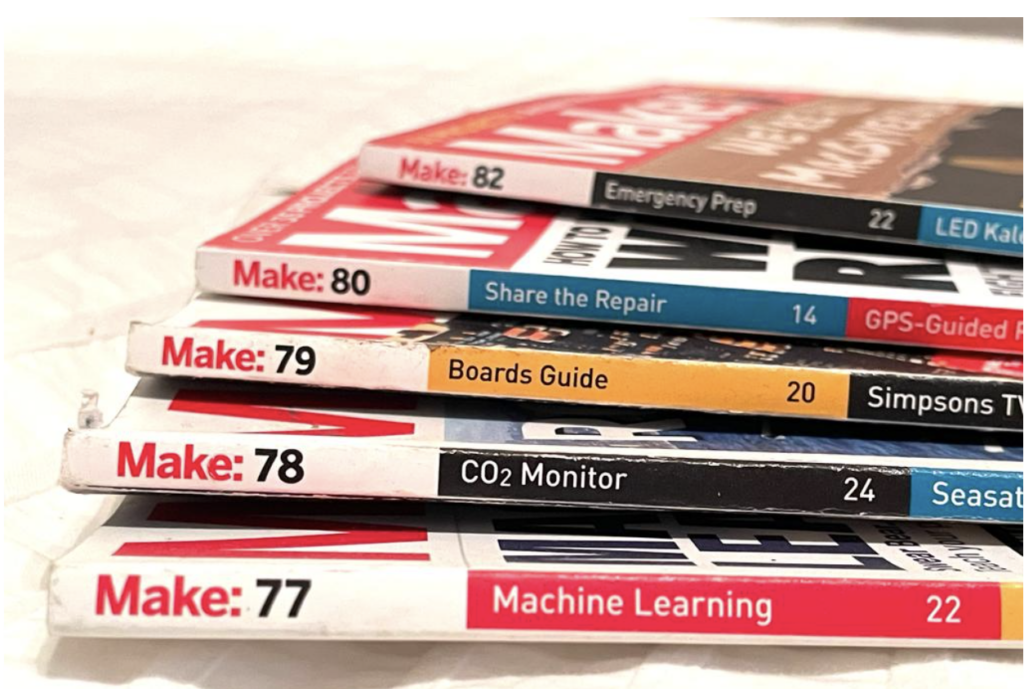
I still keep back issues of Make magazine as a reference for future projects.
What is open source
Open source is software or hardware where the source code or the root design is made available for use or modification by other developers. The details of the design are fully published and therefore easier for other developers to take what has already been built and either modify for a new purpose or to improve the core functionality to make an overall better piece of software or hardware.
As examples, common open source software projects include the operating system Linux, which is an alternative to Windows and iOS and Mozilla, which is a web browser that started life as Netscape. In the hardware world, the Arduino microcontroller and its family are the most famous and widely used open source platforms. Makers and developers can use the Arduino as sold to integrate into projects or they can use the freely published schematics and PCB designs to spin their own custom projects.
By its nature, open source development has a community aspect to it. A number of people are all collaborating, often from disparate geographical areas, to work either on a common piece of software or using common hardware or software to build their own projects. Users learn from communities that are developing hardware and code and are encouraged to publish what they are working on to inspire or help others with their projects. Websites like Hackster.io and hackaday.io are filled with unique projects using open source tools and people can download the steps to build the same project or a version thereof.
While open source can have a makery feel to it, it is big business. Companies like Adafruit, Arduino, Raspberry Pi, and Sparkfun have built businesses around providing open source hardware and software to makers and product developers. There is even an organization called the Open Source Hardware Association (OSHWA) that serves to provide standards for open source hardware, raise awareness of the movement, and organize events for promotion of the community.
History of open source
The open source movement started in software. In the early days of computing going back to the 1950s, software was only developed by high tech companies and universities. Computers were shipped with the source code and companies like IBM openly solicited their users to submit improvements. Eventually, computers and the software to run them became big business and in 1974 software was officially considered a copyrightable work which allowed it to be legally protected. At that point, software companies also started precompiling their code and did not share the source code.
A faulty printer brought open source software to prominence. Richard Stallman was working at the MIT Artificial Intelligence lab in the late 1970s and wrote a piece of code to modify the software on the printer to message others in the lab when it was jammed, thus saving a lot of paper and time. The lab then procured a new printer from Xerox, but when he attempted to do the same modification, he was denied the source code files from the manufacturer. This sparked his interest in open source software and led to him creating the GNU codebase that was a precursor to Linux and his founding of the Free Software Foundation.
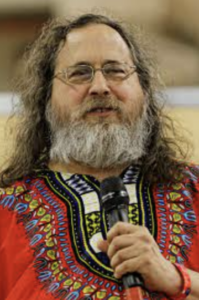
Richard Stallman is the grandfather and advocate of the open source movement.
The late 90s was big for open source as the actual term “open source” was coined by Christine Peterson in 1998. It followed on the heels of Netscape releasing its source code for its web browser Mozilla. This gave a very public face to the open source community as millions of everyday users relied on its development and maintenance.
Open source hardware was soon to follow. Arduino was founded in 2005 in Italy. It was a student-led project at the Interaction Design Institute Ivrea and was a lower cost alternative to the Basic Stamp microcontroller that was widely used at the time. Arduino with its open source design and example code revolutionized the maker community, with over a quarter million units made by 2011, and spawning 1000s of projects that used it as its backbone. Also in 2005, the open source hardware company Adafruit was founded by Limor Fried. Adafruit designs and sells open source hardware and hosts sample projects and software on their website to teach people how to use microcontrollers and IoT.
The Arduino is still the gold standard in open source hardware.
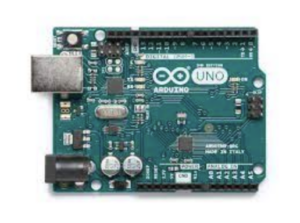
Where once open source was fringe it is now mainstream. It is now estimated that over 99% of Fortune 500 companies use some open source software. Notably, Microsoft, who in 1976 shunned the movement with Bill Gates penning “An Open Letter to Hobbyists” openly calling for programmers to stop stealing his code now owns Github which hosts a plethora of open source software. By crowd sourcing software and hardware development to the masses, it has improved the speed and quality of development that would have taken a huge budget and team to accomplish privately. Big companies are understanding this power and integrating into their business practices. The trickle down effect is that everyday makers, inventors, and hackers also have a treasure trove of sample code, hardware and projects that they can use to get their products spun up quickly and with small, agile teams. Thanks to the open source world, an electronic device company starting their journey by building early prototypes with Arduinos or Adafruit boards is now cliche.
In part 2 I will discuss some applications of open source tools in product development and how they can be used in prototyping.
Work With Us
Want to learn more about how we’d prepare your product for launch? Request a quote today.
Want To See This Advice In Action?
Check out our case studies and learn more about how we’ve achieved stellar results for our clients.


